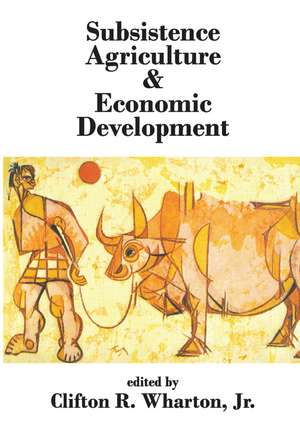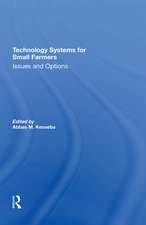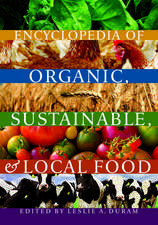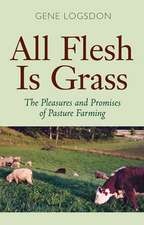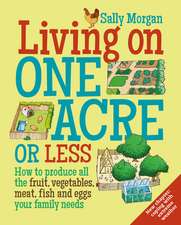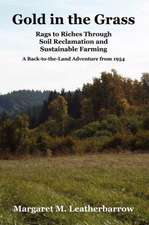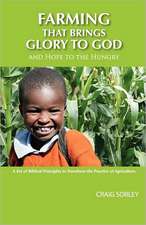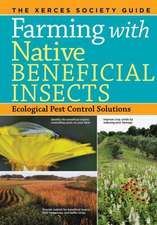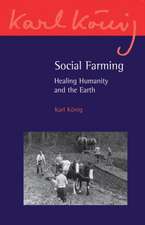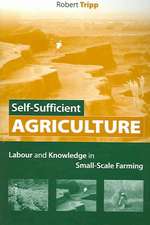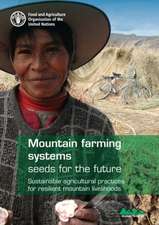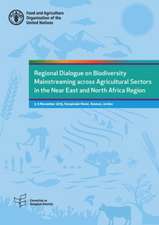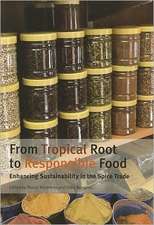Subsistence Agriculture and Economic Development
Editat de Clifton R. Whartonen Limba Engleză Paperback – 30 iun 2008
| Toate formatele și edițiile | Preț | Express |
|---|---|---|
| Paperback (1) | 467.70 lei 6-8 săpt. | |
| Taylor & Francis – 30 iun 2008 | 467.70 lei 6-8 săpt. | |
| Hardback (1) | 1012.47 lei 6-8 săpt. | |
| Taylor & Francis – 13 iul 2017 | 1012.47 lei 6-8 săpt. |
Preț: 467.70 lei
Nou
Puncte Express: 702
Preț estimativ în valută:
89.57€ • 91.40$ • 75.36£
89.57€ • 91.40$ • 75.36£
Carte tipărită la comandă
Livrare economică 26 februarie-12 martie
Preluare comenzi: 021 569.72.76
Specificații
ISBN-13: 9780202362250
ISBN-10: 0202362256
Pagini: 496
Ilustrații: 1
Dimensiuni: 178 x 254 x 31 mm
Greutate: 0.88 kg
Ediția:1
Editura: Taylor & Francis
Colecția Routledge
Locul publicării:Oxford, United Kingdom
ISBN-10: 0202362256
Pagini: 496
Ilustrații: 1
Dimensiuni: 178 x 254 x 31 mm
Greutate: 0.88 kg
Ediția:1
Editura: Taylor & Francis
Colecția Routledge
Locul publicării:Oxford, United Kingdom
Cuprins
Introduction; Introduction; 1: The Development Problems of Subsistence Farmers: A Preliminary Review; 2: Subsistence Agriculture: Concepts and Scope; I: The Subsistence Farmer, Agrarian Cultures, and Peasant Societies; 3: Social Structure and Peasant Economy: The Influence of Social Structure Upon Peasant Economies 1; An Economist’s View of Social Structure Interaction with the Subsistence Economy; The Influence of Social Structure on the Javanese Peasant Economy; A Semisubsistence Village Economy in Lower Burma; 4: The Institutional Aspects of Peasant Communities: An Analytical View 1; Old and New Approaches to Peasant Economies; The Peasant Economies of Today’s Underdeveloped Areas; New Evidence on Farmer Responses to Economic Opportunities From the Early Agrarian History of Western Europe 1; 5: Motivations, Values, and Attitudes of Subsistence Farmers: Toward a Subculture of Peasantry 1; A Critical View of a Subculture of Peasantry; Testing Theories Concerning a Subculture of Peasantry; Growth of “Economic-Mindedness” Among Small Farmers in North Sumatra, Indonesia; II: The Economic Behavior of Subsistence Farmers; 6: Subsistence and Commercial Family Farms: Some Theoretical Models of Subjective Equilibrium; Models of the Family Farm; On Subjective Equilibrium of the Subsistence Farmer; Effects of Increasing Commercialization On Resource Use in Semisubsistence Farms in South Korea; 7: The Subsistence Farmer in Traditional Economies; The Subsistence Farmer in Traditional Economies; 8: Supply Relationships in Peasant Agriculture; Supply Response and the Modernization of Peasant Agriculture : A Study of Four Major Annual Crops in Thailand 1; Supply Relations for Perennial Crops in the Less-Developed Areas 1; III: Theories of Change and Growth; 9: The Early Stages of Development in a Primitive Economy: The Evolution from Subsistence to Trade and Specialization; The Demand for Food, Leisure, and Economic Surpluses; Subsistence and Transition in Agricultural Development among the Ibaloi in the Philippines; 10: Development in Agrarian Economies: The Role of Agricultural Surplus, Population Pressures, and Systems of Land Tenure 1; 11: The Role of Agriculture in Economic Development: Classical versus Neoclassical Models of Growth; Sectoral Interdependence, Structural Transformation, and Agricultural Growth; Two Sector Models and Development Policy; IV: Developing Subsistence Agriculture; 12: Transforming Traditional Agriculture; Questions of Economic Analysis and the Consequences of Population Growth; Diagnosis, Prediction, and Policy Formulation; The Problems of a Subsistence Farm Economy: The Indian Case; 13: The Execution of Agricultural Development: Case Studies of Planned Change; The Cornell Program in Vicos, Peru 1; The Comilla Program in East Pakistan; The ACAR Program in Minas Gerais, Brazil; The Rockefeller Foundation Program in Corn and Wheat in Mexico; V: Research Priorities on Subsistence Agriculture; 14: The Issues and a Research Agenda
Descriere
One of the more perplexing problems of economic development is helping subsistence farmers break away from production simply for home consumption to become commercial farmers, producing more and more for sale in the marketplace
